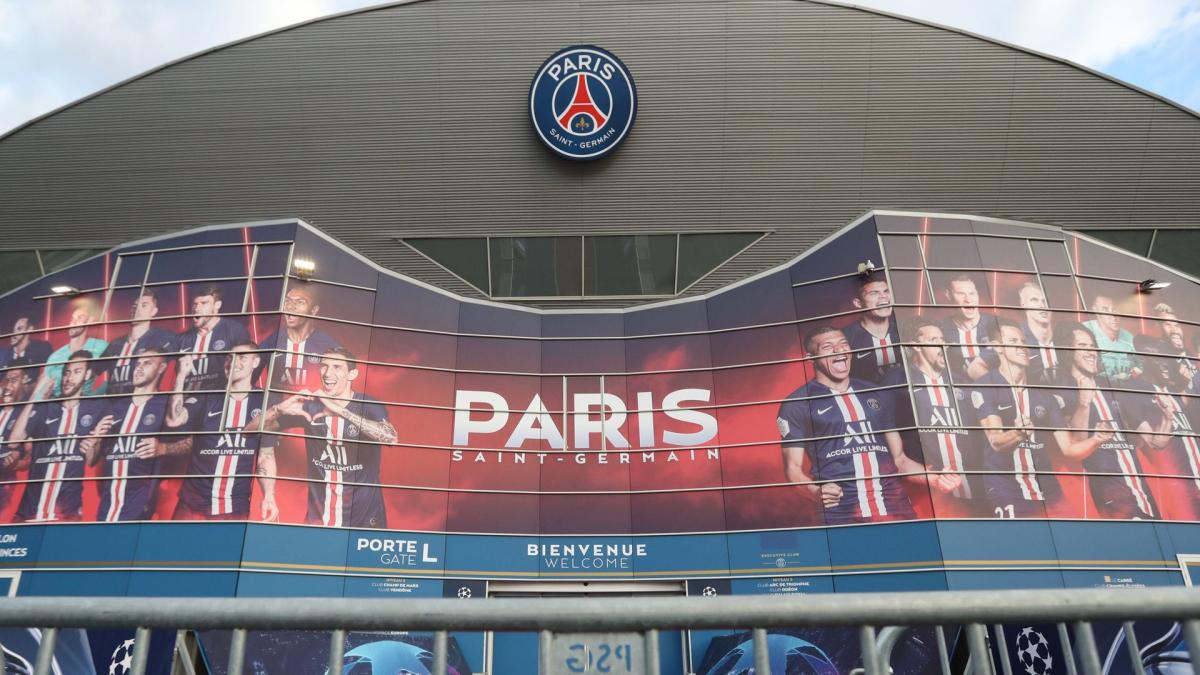The standoff between PSG and Paris town hall over the future of the Parc des Princes started again yesterday. On the occasion of the inauguration of the PSG Campus in Poissy, Nasser Al-Khelaïfi took advantage of his appearance on the airwaves of RMC to put some pressure on Anne Hidalgo and her municipal team. “I really like the Parc des Princes, everyone loves it. If I decide with my heart, I say: “we are not leaving”. But when I think with my head, we are dead. In Europe, all the big clubs have 80,000 or 90,000 seats. (…) We are going to leave. We have no choice. The city leaves us no choice», Says the president of the club, suggesting that he wanted to move quickly, very quickly despite the disagreement of the supporters on this subject. “We need a stadium in 3 or 4 years. We don’t have time to wait (the elections) otherwise we are behind other clubs in Europe.»
A declaration of intention undoubtedly sincere, but very (too?) optimistic in view of the latest stadium construction files in France. For example, OL took a little less than a decade to obtain its OL Park (Groupama Stadium today). The construction project was submitted in 2007, but work started in 2012 and was completed in 2015 and inaugurated this brand new setting the following year. Initially, the Rhone club wanted to enter its stadium in 2010 then 2012, but the search for suitable land, the administrative burden, the various revisions of the local urban planning plan (PLU), the strong local opposition and the difficulties in finding the different sources of financing caused numerous delays. Owned by the club, the Groupama Stadium was financed with private funds, as should be the case for PSG.
Lorrain Merckaert, mayor of Montigny-le-Bretonneux: “This is a project that will take ten years to implement.»
Other recent stadium projects, built for Euro 2016, took less time due to public-private partnerships. For example, Lille took 6 years to obtain the Pierre-Mauroy stadium, Bordeaux and Nice 5 years. The new PSG Campus took 7 years (2016-2023). In these conditions, it is difficult to imagine a building the size of a football stadium.80,000 or 90,000 places» emerge from the ground by 2028 or even 2029, even though PSG still has no land. Neighboring the Bois de Boulogne, the Saint-Cloud racecourse (Hauts-de-Seine), owned by France Galop which is not a seller, was once an option, but its transformation is almost impossible. It would be necessary to modify the local town planning plan, which the town hall refuses to do. “Racecourses will remain racecourses, that is their primary purpose. This is not compatible with the announced projects» even indicated a source to RMC at the start of the year.
We have to look elsewhere, further into the suburbs. The two favorite sites are concentrated around Montigny-le-Bretonneux (Yvelines), around twenty kilometers from the capital, and Aulnay-sous-Bois in Seine-Saint-Denis, slightly closer. For the first, a 50 hectare plot of land was identified to the north of the leisure island of Saint-Quentin-en-Yvelines, near the national velodrome which notably hosted the track cycling events during the Olympic Games. Discussions began two years ago already for a response hoped for in the coming weeks. “The discussions are on standby. Normally, we should have an official response by the end of the calendar year. If the option is serious, we will begin all discussions. It’s a project that will take ten years to implement.”already warned the mayor of the town, Lorrain Merckaert last October.
Two sites emerge
The Divers Droite councilor is satisfied with this project. For him, it is about attracting businesses and jobs to his town, while being realistic on the timetable. Even if he is re-elected in 2026, he is not sure that he will still be in his position 6 years later to see this stadium rise from the ground. The left-wing mayors of the agglomeration have already expressed their concerns and we will undoubtedly have to reckon with associations of dissatisfied residents, or even environmental associations, in addition to environmental constraints to respect. The pretty western Parisian suburb jealously preserves its peaceful setting. We almost forget certain inconveniences linked to the scale of this type of project, such as the possible discovery of archaeological zones. So many obstacles which lengthen the timeline, even if the Île-de-France Region has proposed a 50 hectare plot of land, without specifying its location.
The town of Aulnay-sous-Bois was more vocal in its communication. She was the first to position herself to welcome PSG. The city even published a clip on X featuring local stars (former footballer Olivier Dacourt and actor Saïd Taghmaoui) giving an overview of its project. It would use the wasteland of the former PSA factory, closed in 2014, as land for this hypothetical new stadium. The place has the advantage of being in a huge area (around 180 hectares still available) “ready to use” argues Mayor Bruno Beschizza, with whom he does not know what to do. “We have available land that has already been artificialized, without an agricultural project as is the case with the Triangle du Gonesse and without a direct neighborhood, served by three motorways, two airports and soon a Grand Paris Express station”continues the elected official.
A file with multiple constraints
Various activities have already started to fill these 300 hectares, participating in the revitalization of a site, once a symbol of job losses and deindustrialization. The arrival of PSG would give very strong added value to a city whose image is rarely promoted in the media. The fact remains that the location, far from the wealthy neighborhoods of the capital or the bourgeois towns of western Paris, stands out in this candidacy. “We are still prospecting, several projects are on the table to accommodate a 60,000-seat stadium. It’s complicated, we’re not going to hide it. You need a sufficient surface area, there are legislative and environmental constraints… There are not dozens of places, but there are some” indicated Victoriano Melero, the new general director of PSG to The Team early October. The latter counted on “at least eight years” in this file, double what Nasser Al-Khelaïfi hopes for.
Thursday’s declaration above all resembles a new bout of pressure against a town hall, which is also sticking to its positions. The Parc des Princes is not for sale, especially not at the price of €40 million proposed by PSG in 2022. The municipality estimates the stadium at least €350 million. For comparison, the construction of Parc OL cost €450 million. Faced with these interminable delays, it is perhaps political time that will tip the scales. Much discussed, Anne Hidalgo (PS) would not seek a third term in 2026 at the head of Paris. His main opponent, Rachida Dati (LR), mayor of the 7th arrondissement and also Minister of Culture, maintains closer relations with PSG and Nasser Al-Khelaïfi. She was also present in Poissy for the inauguration of the Campus. His wish is to see PSG stay in the capital. “PSG must stay in Paris», Expresses the one who should be a candidate in 2026.
The 2026 municipal elections as a real factor of change?
A change of municipal team would reshuffle the cards. The question of the sale of the Parc des Princes, where PSG signed a rental lease until 2043 for an annual rent of €2.5 million per year, could be reopened. The conflict has even spread to the Île-de-France region. Last September, the region chaired by Valérie Pécresse (LR) officially made a 50-hectare space available to the club, without specifying its location. “The club asked, during the public inquiry, to reserve, in the development plan of Île-de-France, which authorizes the major infrastructures of Île-de-France, 50 hectares for a possible relocation of the PSG outside Paris. We said yes because we are not going to deprive our club of the infrastructure that is necessary for it. If PSG is kicked out of Paris, obviously, we will welcome it elsewhere, in Île-de-France.»
This decision provoked the wrath of Parisian elected officials. Always in favor of modernizing the Park, the Paris council expressed the wish to seize “administrative justice for the purposes of annulment of the amendment made to the SDRIF (the master plan of the Île-de-France region, document defining the town planning and regional development policy) in favor of the installation of the PSG in a stadium in Île-de-France, outside Paris, and without location. » Some elected officials from the capital are also Les Républicains regional councilors and did not vote against the wishes of the Paris council, risking alienating the regional president. The case risks dragging out once again. Rather, it is the political arena that could guide future decisions, at best in March 2026 during the next municipal elections. By then, PSG will have been able to move forward with its project, but to see the club in its brand new setting, we have to look much further.

